Kicking things off this week with some data culled by the folks over at Crunchbase that’s very much in line with what we’ve been saying on Actuator all along. The past couple of years have been genuinely transformational for robotics. Since the beginning of the pandemic, the conversations I’ve been having with startups and VCs about an automated future have shifted to the now. A highly transmittable virus coupled with an ongoing labor crisis has a way of moving mountains.
That said, there are certain external forces and unavoidable realities to investing. As Alex and Anna noted late last month in a pieced titled, “The venture slowdown is impacting fundraising for startups of every size, sector” (TechCrunch+ subscription required):
The value of technology stocks began to decline in late 2021, a slide that continued into 2022, leaving many tech shops trading at a stiff discount to their recent valuation highs. Given that late-stage startup valuations are the most easily compared to those of public companies, it was expected that growth-stage investors would shake up their pricing models and perhaps reduce their risk appetite.
These forces appear to have had some impact on robotics — but given the tailwinds of the past couple of years, the sector is still performing strongly. Automation is something companies invest in to steel themselves for bleak times — be it labor issues, supply chain crises, competition or keeping up with increased demand. The current moment is a reminder of how important it is to prepare oneself for future issues.
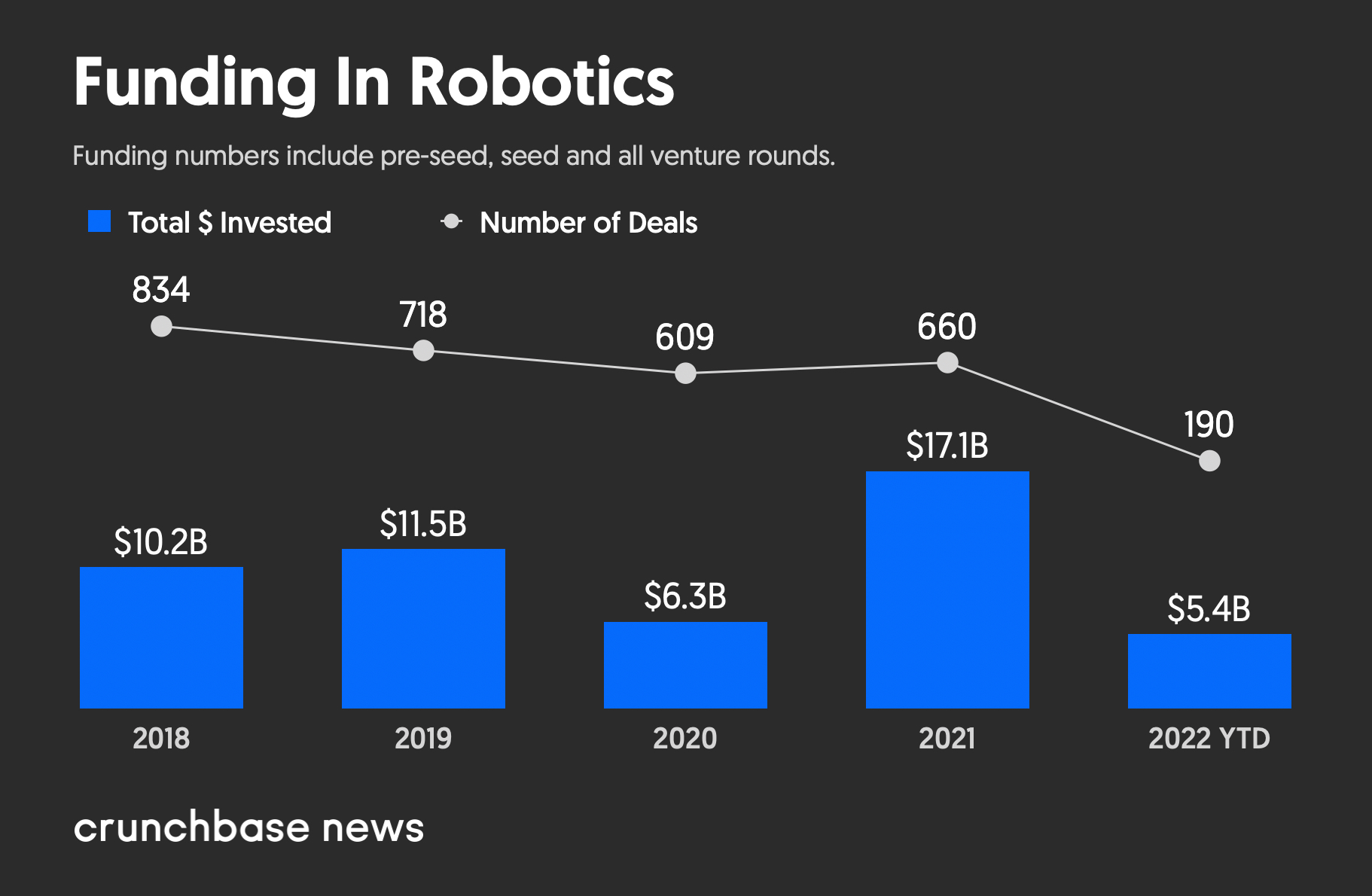
Image Credits: Crunchbase
All of these factors are borne out by Crunchbase’s latest figures on the category,
Last year more than $17 billion poured into VC-backed robotic startups, nearly triple the investment in 2020. This year is a little behind that pace, but the sector already has seen more than $5 billion flow to startups.
Anecdotally, I’d say that’s well in line with what we’ve been seeing on our end: a big, pandemic-fueled spike in investments, followed by a slight slowdown. But that slowdown is nothing compared to the broader funding issues startups are currently facing. As ever, certain sub-categories within robotics are going to regress to the mean, but warehouse/fulfillment, manufacturing, agtech, medical and food appear well positioned here.
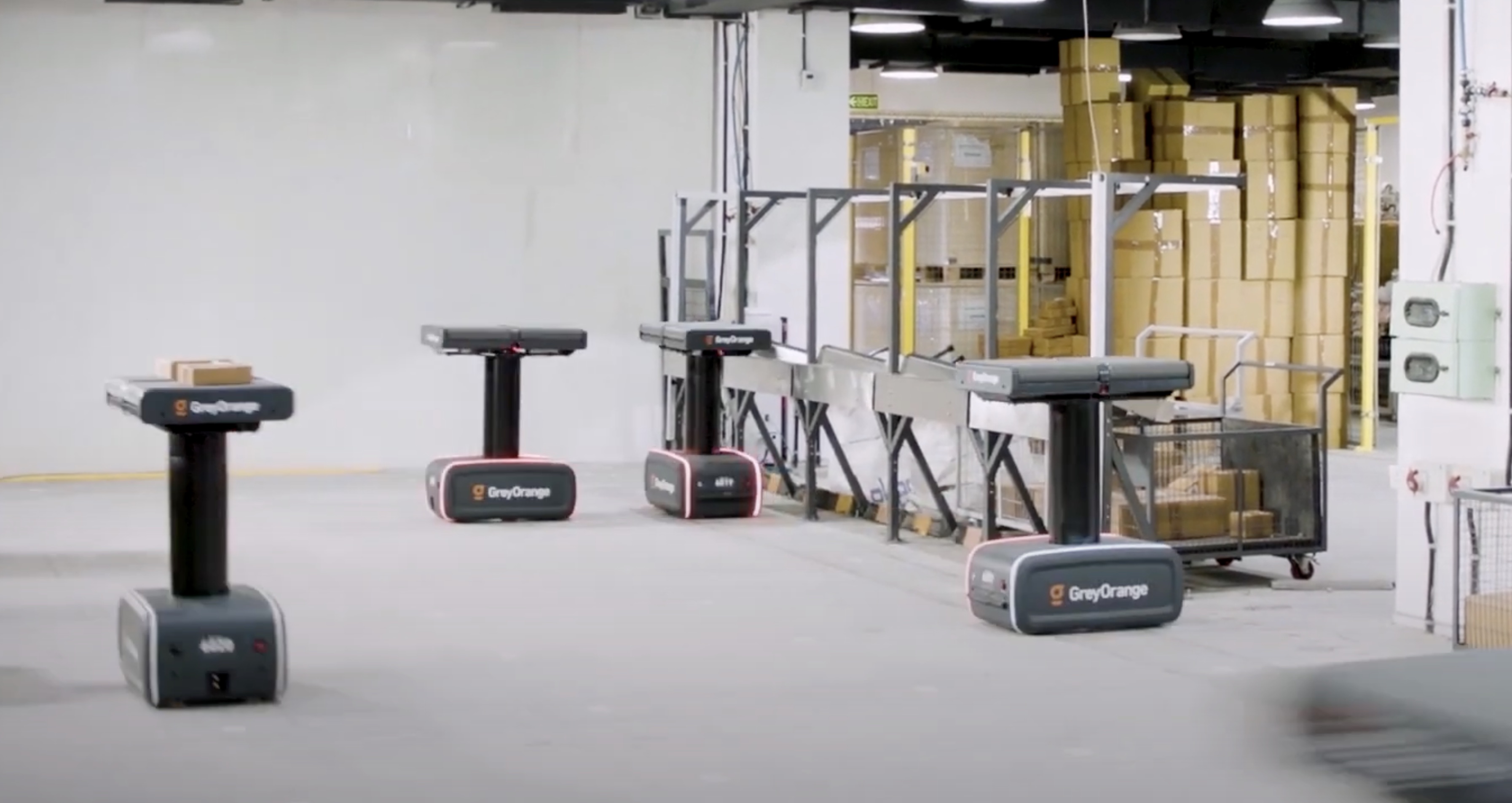
Image Credits: GreyOrange
An extremely small sample size, I realize, but another flurry of activity this week points to sustained interest among investors. The first comes to us by way of GreyOrange, which recently struck a partnership with Walmart Canada. Though the company went the less traditional debt financing round here, with backing from Mithril Capital Management and BlackRock. The $110 million raise follows rumors last year that the India/Denver-based firm was planning an IPO (which, again, given current market conditions, might not have been the wisest move).
On that note, CEO Samay Kohli tells me:
Success for us looks like solving big challenges in fulfillment for as many customers as possible globally. We’re firmly focused on how we can deliver on surging demand from our customers as quickly and efficiently as possible. An IPO is certainly a viable option to make that happen in the future.
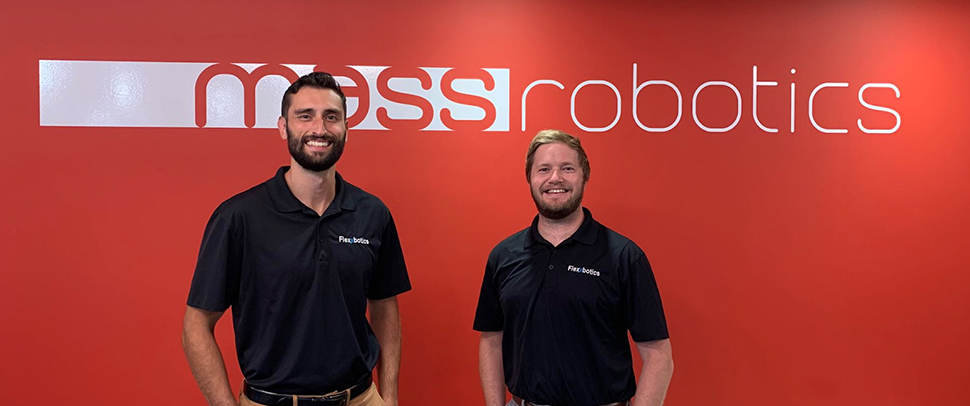
Image Credits: Flexxbotics founders
Haje has the latest on Boston-based Flexxbotics, which is working to deliver work-cell manufacturing to the cloud. The firm raised a $2.9 million Series A for software solutions to connect robots with other manufacturing tools.
“Flexxbotics is focused on the mission of helping discrete manufacturing companies complete the digital transformation,” CEO Tyler Bouchard tells TechCrunch. “These companies have struggled with the challenge of connecting ERP, MES and other modern business systems with the legacy production equipment on the shop floor,” says Bouchard. “Our vision is to change that by providing a turnkey tool kit to seamlessly connect robots, CNC machines, PLCs and other manufacturing with each other through a shop floor communications mesh.”
Some interesting news out of DeepMind this week, as well. The Alphabet-owned firm unveiled Gato, a “general purpose” AI system that’s made some pretty amazing leaps. The system is capable of a wide range of different tasks, from captioning images to stacking blocks with robotic arms.
“Most current AI systems work on a single task or narrow domain at a time,” co-creator Scott Reed tells TechCrunch. “The significance of this work is mainly that one agent with one [model] can do hundreds of very different tasks, including to control a real robot and do basic captioning and chat.”
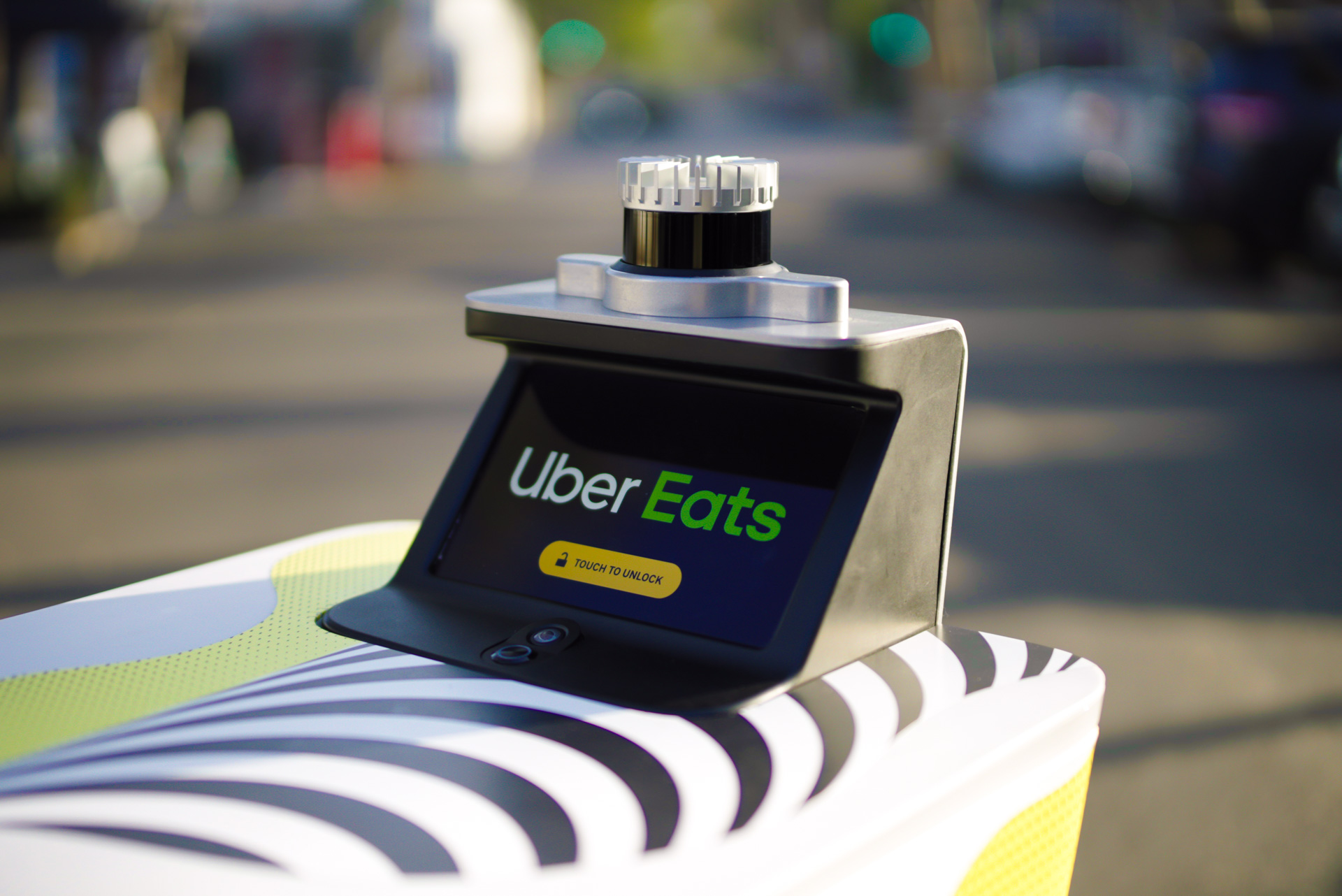
Serve Robotics is partnering with Uber Eats on an autonomous delivery pilot in Los Angeles. Image Credits: Uber
Uber Eats this week announced a pair of deals to pilot last-mile delivery in the Los Angeles area. The partners are autonomous driving company Motional and Serve Robotics, an Uber spinout that makes sidewalk delivery robots.
“We’ll be able to learn from both of those pilots what customers actually want, what merchants actually want and what makes sense for delivery as we start to integrate our platform with AV companies,” an Uber Eats spokesperson told TechCrunch. “The hope is that they’re successful and that we learn over the coming months, and then figure out how to scale.”
The companies will start with a select number of merchants, with Serve handling shorter trips to West Hollywood and Motional traveling out to Santa Monica, hungry and hollow for all the things you took away.
Some notes from investors this week about the construction space and the role robotics and automation will play in shaping the industry, going forward. Here’s PSP Growth Managing Director Momei Qu:
In the long run (five to 10 years), there will be game-changing innovations around new materials, automation techniques and robotics that could fundamentally change how things are built and create a better, safer environment for those in the industry, which will hopefully also help with the labor shortage. I often look out my window at construction sites and think: ‘Humans should not be doing that.’
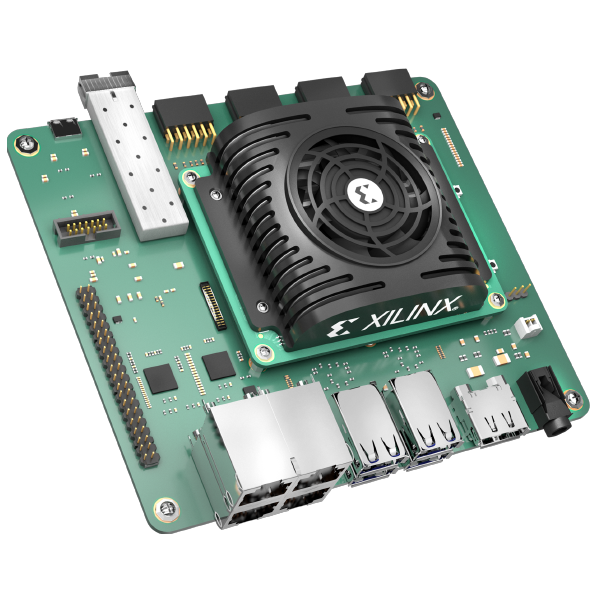
Image Credits: AMD
Last week we discussed how Qualcomm is aggressively pushing into the robotics development space alongside companies like Nvidia. Now it’s AMD’s turn, with the announcement of the new Kria KR260 Robotics Starter Kit. Says senior director, Chetan Khona, “Roboticists will now be able to work in their standard development environment on a platform that has all the interfaces and capabilities needed to be up and running in less than an hour. The KR260 Starter Kit is an ideal platform to accelerate robotics innovation and easily take ideas to production at scale.”
The system is available now, priced at $349.

Image Credits: Bryce Durbin/TechCrunch
For more on the ups and downs of robotics investing, subscribe to Actuator.















 English (US) ·
English (US) ·